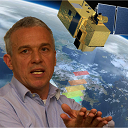Cropland Phenology Monitoring Based on Cloud-Computing Platforms
A special issue of Remote Sensing (ISSN 2072-4292). This special issue belongs to the section "Remote Sensing in Agriculture and Vegetation".
Deadline for manuscript submissions: 31 July 2024 | Viewed by 11879
Special Issue Editors
Interests: imaging spectroscopy; vegetation properties retrieval; FLEX; vegetation fluorescence; optical remote sensing; radiative transfer models; retrieval methods
Special Issues, Collections and Topics in MDPI journals
2. Mantle Labs GmbH, Vienna, Austria
Interests: agriculture; hybrid retrieval; hyperspectral remote sensing; machine learning methods; active learning
Special Issues, Collections and Topics in MDPI journals
Interests: evapotranspiration; gross primary productivity; SCOPE model
Interests: remote sensing of vegetation with focus on time series analysis and use of physically based radiative transfer models for mapping biochemical and biophysical traits
Special Issues, Collections and Topics in MDPI journals
Special Issue Information
Dear Colleagues,
Monitoring cropland phenological and seasonal dynamics is crucial to address sustainable agricultural production and hence global food security concerns. In addition, as climate change is one of the major pressures on Earth, globally assessing the phenology of cultivated lands is becoming of paramount relevance. Earth observation data helps to acquire phenology-related information frequently and on any place on Earth, enabling to trace crop development, which in itself is closely linked to crop production. Monitoring of cropland seasonal dynamics is thus a basic requirement to ensure food and nutritional security for a growing world population. Recently, significant progress has been achieved in mapping agricultural croplands using a multitude of satellite sensors at diverse spectral, spatial and temporal resolutions. To achieve this, cloud computing facilities have been introduced providing processing capabilities for deriving time-series of imagery over large areas from regional to global scales. Google Earth Engine (GEE) emerged hereby as an attractive high-performance platform, ingesting diverse machine learning algorithms to retrieve multidate cropland information, consistently acquired with sun-synchronous satellite data. Nowadays, GEE allows the cloud-based processing of petabytes of satellite data, thus providing powerful computational capacity for planetary-scale data processing. While multiple studies have recently been conducted using GEE for diverse applications in an agricultural context, we still see an untapped potential to integrate advanced image processing algorithms in cloud-computing environments, such as machine learning regression models and phenology detection methods. Introducing these algorithms in web-based platforms will open up capabilities for delivering unprecedented seasonal cropland monitoring services applicable anywhere and anytime in the world.
Along with GEE, alternative cutting edge platforms, such as Amazon Web Services (AWS), Sentinel Hub, Open Data Cube (ODC) and OpenEO started to pave the way for moving from traditional image analysis using desktop PCs to cloud-based processing facilities.
This Special Issue encourages contributions aimed at estimating different phenology metrics, exploring time series data from optical and radar Earth Observation products in the context of agricultural disciplines and in particular exploring cloud computing platforms. We aim to cover diverse spatial scales, i.e. from local to global, using multiple sensors, such as MODIS, Copernicus Sentinel or Landsat families. The exploitation of advanced retrieval techniques is encouraged, ranging from empirical nonparametric (non)linear to physically-based (radiative transfer modelling) to hybrid methods, as well the usage of flexible smoothing and gap-filling methods. Apart from single-source time series processing, this Special Issue also encourages contributions where multiple EO time series sources are fused, e.g. for improved seasonality detection, such as harmonised Landsat and Sentinel products, as well fusion methods focusing on synergies between optical and radar data. Altogether, this Special Issue is expected to demonstrate recent progress of cloud based computing facilities and to discuss future perspectives in cropland traits sensing.
We welcome contributions that fall within the following themes (but are not limited to them):
Themes:
- phenology metrics estimation using cloud computing platforms
- analysis of time series dynamics from optical and radar Earth Observation data
- advanced gap-filling and smoothing techniques in cloud computing platforms
- time series fusion methods focusing on synergies between optical and radar data
- cloud based computing facilities exploring cropland traits monitoring
- Assessing and uncertainties in phenology metrics retrievals
- Productivity and yield estimation based on time series processing
Article types:
- Research articles
- Review articles
- Short communications
- Technical notes
Dr. Jochem Verrelst
Dr. Katja Berger
Dr. Egor Prikaziuk
Dr. Clement Atzberger
Guest Editors
Manuscript Submission Information
Manuscripts should be submitted online at www.mdpi.com by registering and logging in to this website. Once you are registered, click here to go to the submission form. Manuscripts can be submitted until the deadline. All submissions that pass pre-check are peer-reviewed. Accepted papers will be published continuously in the journal (as soon as accepted) and will be listed together on the special issue website. Research articles, review articles as well as short communications are invited. For planned papers, a title and short abstract (about 100 words) can be sent to the Editorial Office for announcement on this website.
Submitted manuscripts should not have been published previously, nor be under consideration for publication elsewhere (except conference proceedings papers). All manuscripts are thoroughly refereed through a single-blind peer-review process. A guide for authors and other relevant information for submission of manuscripts is available on the Instructions for Authors page. Remote Sensing is an international peer-reviewed open access semimonthly journal published by MDPI.
Please visit the Instructions for Authors page before submitting a manuscript. The Article Processing Charge (APC) for publication in this open access journal is 2700 CHF (Swiss Francs). Submitted papers should be well formatted and use good English. Authors may use MDPI's English editing service prior to publication or during author revisions.
Keywords
- Google Earth Engine
- cropland phenology metrics
- machine learning regression algorithms
- cloud computing
- hybrid methods
- gap-filling








